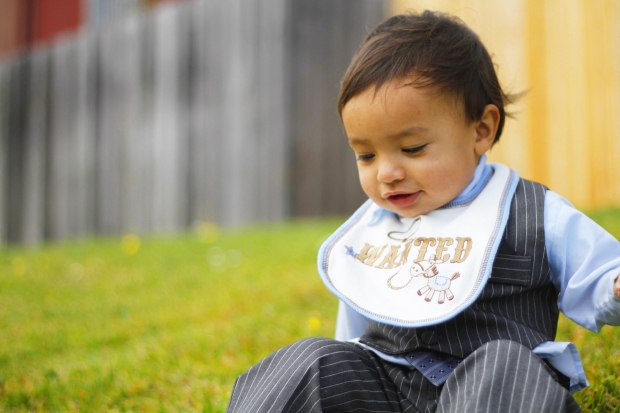There are certain rules of introduction of complementary foods - a new food in the diet of the child. Ways of introduction of complementary foods several, there is a pediatric feeding (the child is gradually introduced puréed food), there is a pedagogical lure (baby gets food from the General adult table pieces). We will talk about the introduction of the pediatric feeding.
For decision-making on the early introduction of new products in the diet of the child should be guided by several indicators.
1. The child's age 4.5 to 6 months (if the child is breastfed, it is not until 5.5 months.
2. The child should be able to sit independently or with support on a chair.
3. The child is able to take food from a spoon.
4. The kid disappeared a protective reflex of pushing out tongue pieces mouth.
5. The baby is healthy.
6. Immunizations at the time of introduction of complementary foods should not be.
7. The lure is introduced in the first half of the day .
8. The lure is offered to child before breast feeding or formula.
The new food child also must meet some requirements:
1. Food should be homogeneous and puree.
2. Contain only one product (monocomponent food).
3. Solid foods should be warm.
4. Cooked or just open (if it's food from the jar).
5. The baby foods should not contain salt, sugar, spices, starch, food additives, and , especially, flavors and dyes.
To choose which food to feed child, prepare yourself or buy ready-made products, only you can decide. If you are confident in the quality of those products used to prepare food your toddler can prepare the foods yourself. If the products foods you buy in a supermarket or on the market from unknown people, then it is better to trust the children's food industry, as the first to get on the table for your kid these products goes through a series of studies.
For the first feeding currently pediatricians recommend the use of vegetable puree or porridge. Moreover, the cereals are selected only in the case when the child is in arrears of their body weight. In all other cases it is better to start to feed the child mashed vegetables. You can choose which vegetables to start feeding the baby. It can be cauliflower, broccoli or zucchini. To begin introduction of vegetable puree should be gradual with a half-teaspoon daily gradually increasing the volume to 100-150 ml. it will take about two weeks. After this time, invite the child to new tastes. So, if you fed the baby cauliflower can be given, for example, broccoli. A week offer the child the tavern. The introduction of vegetable foods you will take about one month.
Now you can try Kashi. Cereals you can cook yourself, but you can buy ready-made porridge for baby food. They are good because usually enriched with vitamins, minerals and even probiotics. Prepared very quickly and has a pleasant taste. Keep in mind that to explore kas will not be suitable for all grains and cereals. The child can be offered a dairy-free gluten-free cereals: buckwheat, rice, corn. One new flavor a week. They must not contain other components, except those that the child tried. As if it wasn't beautifully written that it's buckwheat porridge with Apple and apricot. As the child with these tastes is not familiar, then better not to start exploring them cereals together. In case of allergic reaction or intolerance to be removed from the child's diet both. Another three weeks will go on trial kas.
After cereals, you can introduce a kid to the meat, which can be added to the composition of vegetable puree. Requirements for the meat is simple: lean, homogeneous substance. You can cook yourself, you can buy baby food. Carefully read the part on the jar and estimate shelf life. In meat canned food should not be anything except meat. You can offer a child a Turkey, beef, lamb, lean pork, for children prone to allergies, the best choice would be a horse or a rabbit. Stick to the rules - one new taste a week!
After the child met with the meat, you can offer him cheese, and then fruit puree hypoallergenic fruit – Apple, pear or plum. Juices in the diet of the child will not be introduced before 10 months of life, before use, it is desirable to dilute with drinking water. To 10-11 months.the life of a child you can introduce kefir or yogurt. At the same age you can start to accustom to the food pieces. For example, boil vegetables and mash with a fork, from meat to make the meatballs and also mash them. Vegetable soup you can add the yolk of chicken ( ½ ), or quail eggs. Fish in the diet of the child (cod, perch) administered closest to year or after a year instead of taking meats one or two times a week.
Thus, by the end of the first year of life diet sample menu baby will look like. Breakfast – porridge 150-200 g, fruit puree 30-50 g, juice (juice, juice) 30 ml. Lunch – vegetable soup with vegetable broth 150-170 g, meat balls 50 g, tea or juice 30 g Snack - 50 g of cottage cheese, fruit puree 50-100 g, cookies or crackers 10 g. Dinner – yogurt or yogurt Saved 170-200 g. morning and evening breast feeding, nursing on demand baby and for NAPs. If the child is on artificial feeding the mixture at 6 o'clock in the morning and before bedtime.
Bon appetit!
